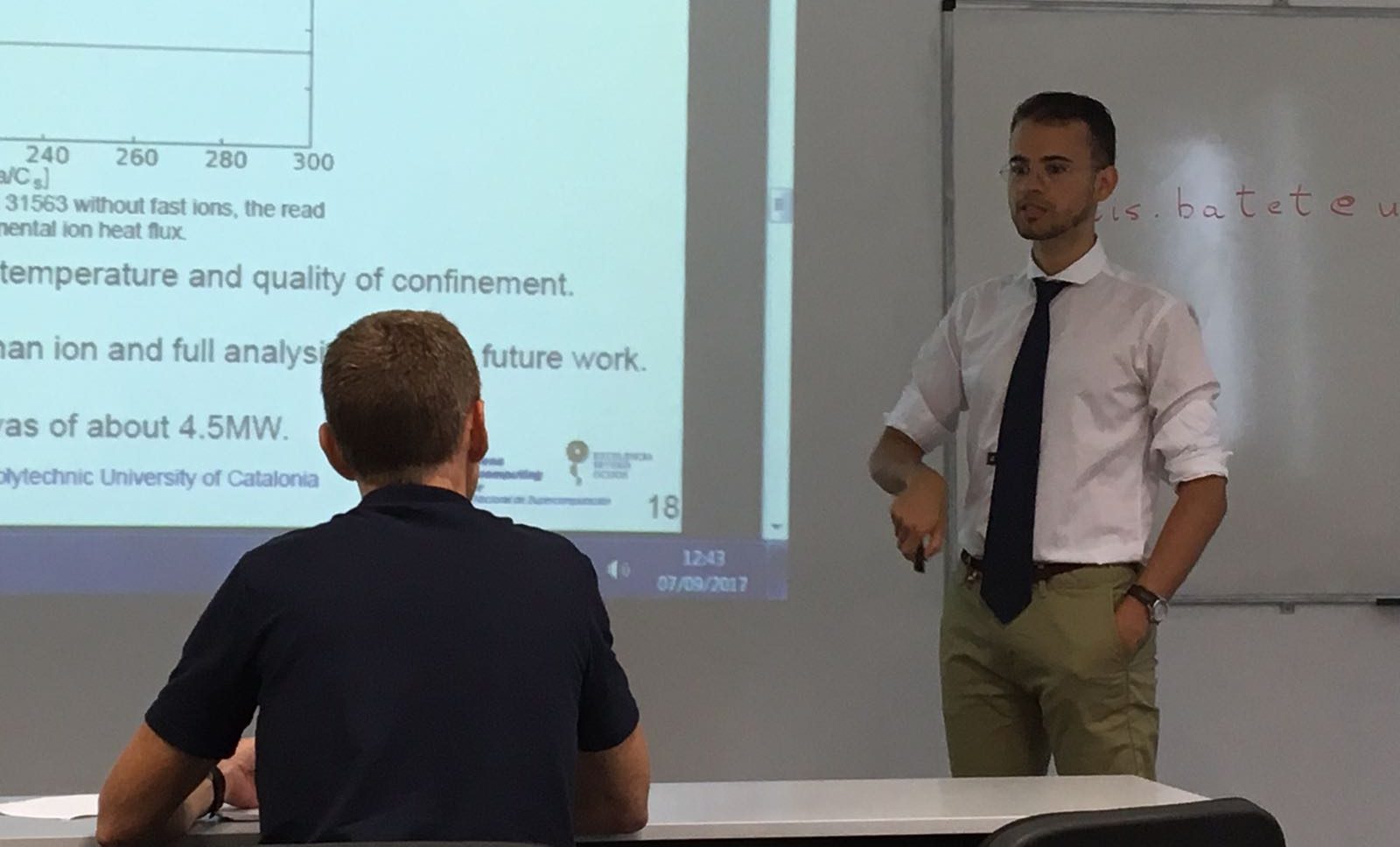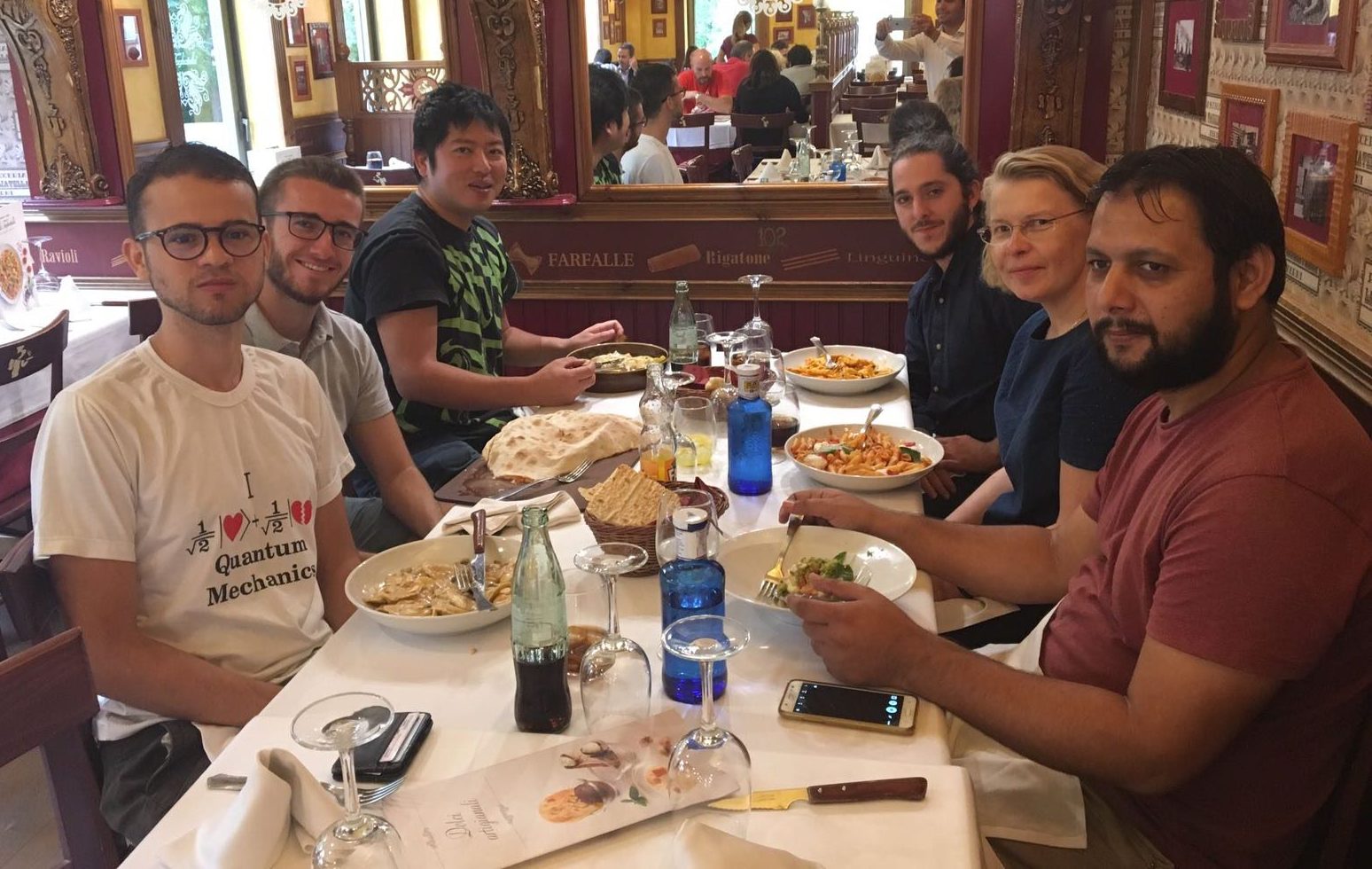
The past weeks have been particularly busy for the MSc students Felipe Nathan de Oliveira and Marc Eixarch in our fusion group. That came to an happy end when they both presented and finished their MSc Thesis on the consecutive days, the 7th and the 8th of September. Both theses were given top marks, proving the relevance and originality of both works.

Felipe Nathan completed his Master’s Degree in Nuclear Engineering at UPC. Over the past year and a half he did his Master Thesis entitled “Non linear electromagnetic stabilization of microturbulence by fast ions” in the Fusion Group at BSC. To quantify the impact of fast ions on the stabilization of Ion Temperature Gradient (ITG) microturbulence, and making use of state of the art codes GENE and FIDO, he simulated an experimental discharge in which high values of central ion temperature were measured. His study concluded that fast ions can have a pertinent impact on the reduction of ion heat flux for the discharges under consideration, and provide a microturbulence stabilizing mechanism.
Last week Felipe Nathan moved to Munich, Germany, to continue his scientific career with a PhD thesis at the Max Planck Institute for Plasma Physics in Garching.
Marc completed his Master’s Degree in Modeling for Science and Engineering at UAB. His Master Thesis was entitled “Electronic structure simulations for large metallic systems” and summarized the research he carried out over the past six months in our group, in close collaboration with the materials group at BSC. His research focused on fusion materials. In particular, he studied properties of the so-called point defects in a Tungsten bbc lattice using the BigDFT tool. BigDFT is a highly parallelized code implementing Density Functional Theory (DFT) which presents a universally applicable linear scaling version. This reduced scaling in DFT allow one to perform simulations with system sizes larger than those used with the standard method which scales cubicly with the system size. The results obtained during the research period may help the fusion community to quantify the damage in the first wall of a future fusion reactor using Tungsten.
The two dissertations will be available soon under Education on our group web page.


1 thought on “Two group members present their Master Thesis with flying colours”